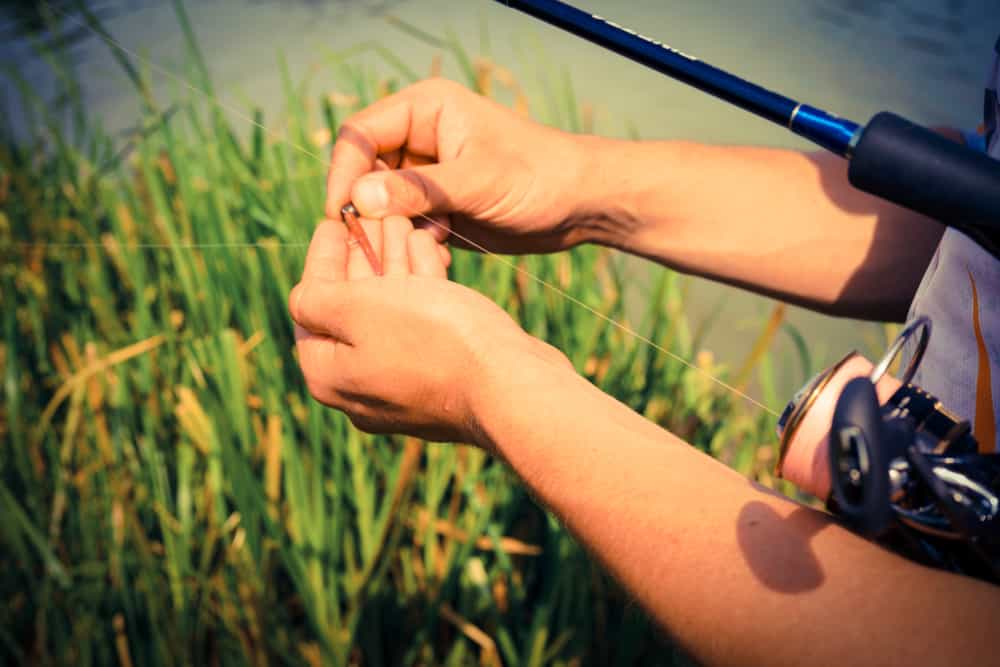Fishing is one of the country’s most popular sports, with about 58 million aspiring anglers now trying their luck on America’s waterways.
As any great fishing enthusiast will tell you, however, luck is only part of the equation. While it’s impossible to predict exactly how fish will act and when you’ll get a bite, you can significantly improve your chances by using the right tools for the job.
In our guide to blade baits, we’ll explore how these baits work, examine why they’re effective, pinpoint which fish prefer which blade bait types and offer pro tips to help ensure more casts lead to catches.
What Are Blade Baits?
Blade baits have been hooking fish since the late 1950s. While materials have improved, the basic form and function remain the same. This is because simplicity is the soul of blade baits.
So, what is a blade bait? It has a thin, metal body shaped like a small fish, along with realistic-looking fish eyes. Blade baits typically include holes for snap attachments such as treble hooks or additional blades. Many feature multiple holes along the top edge for your line, and they come in a variety of colors.
Blade baits work because they effectively mimic the movement of sluggish baitfish. The metal body provides tight vibration when moved in the water, in turn prompting reactionary movement from fish.
While it’s worth keeping blade baits in your tackle box all season, they’re most effective in cooler water or deep structure environments.
Why Blade Baits Are Effective
What sets these blades apart from other baits? Simple design is their core advantage. Instead of using flashy colors or mechanical motions to capture attention, they use metal to attract the eye and weight to mimic common fish motions.
Blade baits offer three advantages for anglers:
They trigger predatory instincts
Blade baits create both vibrations and flash effects in the water. These effects trigger predatory instincts even in skittish and finicky fish, increasing your chances of landing a bite.
They attract multiple fish types
You can use blade baits to catch fish types including walleye, smallmouth and bass. These baits also excel at triggering responses in fish that are suspended deep or hugging the bottom.
They work with many fishing styles
With options for snap attachments and different line placements, blade baits can be used with many fishing styles. These include vertical jigging, slow retrieves and aggressive lifts. They’re also usable in differing water depths and for different levels of fish activity.
Best Blade Baits for Specific Fish
The best blade baits for smallmouth, bass and walleye vary depending on which type you’re after. For example, the best blade bait for walleye is silver or gold, like the classic Silver Buddy. If you’re looking for the best blade bait for smallmouth or perch, meanwhile, consider using a chartreuse-colored lure.
Water clarity and conditions also play a role in selecting the ideal sizes and colors of blade baits. If it’s sunny and the water is clear, silver blades are the most effective. Under cloudy conditions or those where the water is more stained or muddy, consider using a gold blade.
Deeper waters often benefit from 1/2 oz blades, while shallower fishing may be better served by 3/8 oz blade bates.
Blade quality also makes a difference. While it’s not difficult to make a blade, it’s challenging to make a blade that consistently works to lure fish. Trusted brands include Silver Buddy, Damiki Vault, Heddon Sonar and SteelShad, all of which offer a variety of blade baits.
Pro Tips for Using Blade Baits
Blade baits are designed for simplicity, but using them effectively can prove challenging. Here are five pro tips to get you started.
- Do less to get more bites
Blade baits are heavier than most other lures. This means they rapidly sink when cast, in turn causing many beginner anglers to overwork the rod with multiple pulls and hops.
To catch more fish, do less. If you’re vertical jigging, let your bait hit the bottom and then hop it up. Once you feel three or four vibrations, let it fall to the bottom again and repeat. More vibrations mean the line is coming up higher, which reduces your chances of getting a bite.
- Use the right line
Line type also matters. With blade baits, you’re best to use a braided line with fluorocarbon leader or straight fluoro. This makes it easier to differentiate between vibrations on the line and fish taking the bait.
- Try different retrieve styles
Because blade baits include multiple line attachment points, there’s no one-size-fits-all retrieve style. You can try lift-fall for vertical jigging, a slow sweep for horizontal retrieving, or a tight hop technique for longer casts.
If the fish still aren’t biting, consider adding more flash with an extra blade on the back. This increases both vibration and visibility.
- Adjust for your target
What you’re after, where you’re fishing and when you’re out all make a difference. As noted above, different fish prefer different colored lures — the best blade baits for bass are shiny and silver — and weather conditions affect visibility. Temperature also plays a role. In colder water, you want slower motions to attract fish. In warmer conditions, aggressive movements are more effective.
- Avoid common mistakes
If you want more catches, avoid common mistakes. First, don’t over-jig. Blade baits are designed for vibration; over-jigging works against this vibration.
Second, make sure your rod isn’t too stiff. This can lead to hops and lifts that pull your bait too far off the bottom. Finally, don’t go too fast. Blade baits are often used in shoulder seasons during colder conditions, which require slower and more deliberate movements.
Get Hooked at Duck Bay Lodge
Looking for your chance to experience blade bait fishing at its finest? Look no further than Lake of the Woods fishing trips at Duck Bay Lodge. Located on an island in the southeast corner of the lake, Duck Bay Lodge puts you in the middle of 600 acres of unspoiled nature and some of the best fishing in Ontario, Canada.
Our expert fishing guides can help you explore the lake to its fullest, select the best blade lures, and go after that trophy catch you’ve always wanted.
Nature is calling — and the fish are biting. Book your next trip today.

